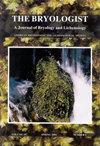标题刺竹科刺竹属二新种。产自巴西塞拉多(巴西稀树草原)
IF 1.5
4区 生物学
Q4 PLANT SCIENCES
引用次数: 2
摘要
摘要杆状菌属是杆状菌科(子囊菌科:杆状菌科)中最多样化的属,它包含的物种很容易通过在菌体下部皮层上存在的真正的杆状菌来识别。本文描述了在巴西中部典型塞拉多植被中采集到的2个新种:塞拉多S. cerradensis和波雷拉S. porella,包括基于ITS区域的形态、解剖和分子分析。这两个新分类群属于一个主要的棍棒纲分支,其中包括大部分新大陆物种。这项研究表明,位于南美洲中心的全球生物多样性热点塞拉多可能包含多种地衣真菌新种。本文章由计算机程序翻译,如有差异,请以英文原文为准。
Two new species of Sticta (Peltigeraceae subfam. Lobarioideae) from the Brazilian Cerrado (Brazilian savanna)
Abstract. Sticta, the most diverse genus of the Lobarioideae (Ascomycota: Peltigeraceae), contains species easily recognized by the presence of genuine cyphellae on the lower cortex of the thallus. Two new species collected in typical cerrado vegetation in Central Brazil are described as S. cerradensis and S. porella, including morphological, anatomical, and molecular analyses based on the ITS region. The two new taxa belong to one of the major Sticta clades, which contains mostly New World species. This work shows that the cerrado, a global biodiversity hotspot located in the center of South America, could contain a great diversity of new species of lichenized fungi.
求助全文
通过发布文献求助,成功后即可免费获取论文全文。
去求助
来源期刊

Bryologist
生物-植物科学
CiteScore
2.40
自引率
11.10%
发文量
40
审稿时长
>12 weeks
期刊介绍:
The Bryologist is an international journal devoted to all aspects of bryology and lichenology, and we welcome reviews, research papers and short communications from all members of American Bryological and Lichenological Society (ABLS). We also publish lists of current literature, book reviews and news items about members and event. All back issues of the journal are maintained electronically. The first issue of The Bryologist was published in 1898, with the formation of the Society.
Author instructions are available from the journal website and the manuscript submission site, each of which is listed at the ABLS.org website.
All submissions to the journal are subject to at least two peer reviews, and both the reviews and the identities of reviewers are treated confidentially. Reviewers are asked to acknowledge possible conflicts of interest and to provide strictly objective assessments of the suitability and scholarly merit of the submissions under review.
 求助内容:
求助内容: 应助结果提醒方式:
应助结果提醒方式:


